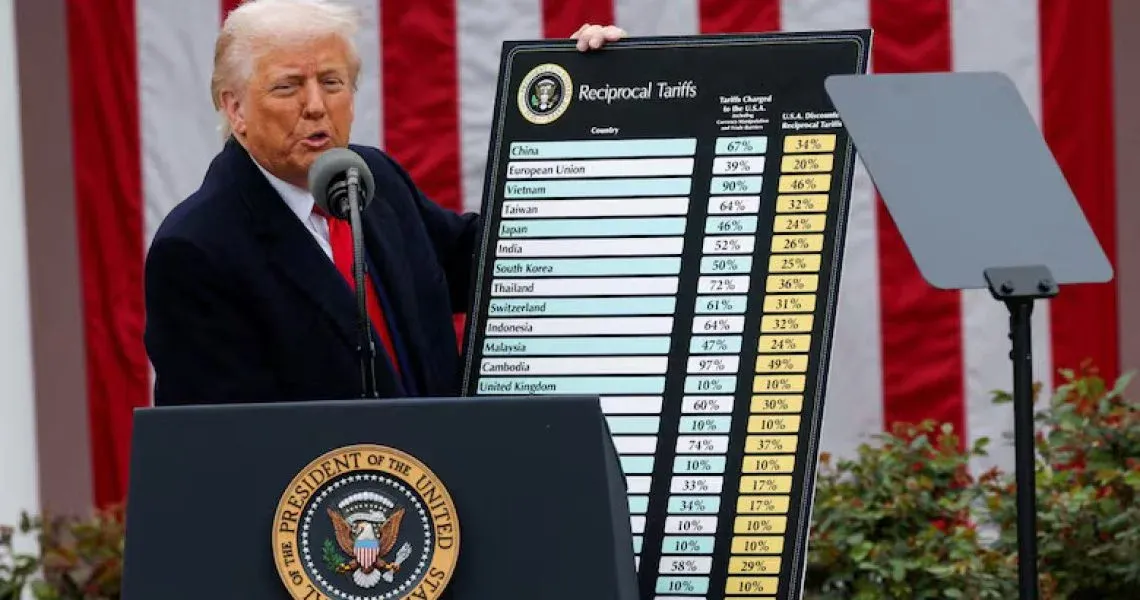US Tariffs Spark Global Economic Tension
US tariffs drive up import costs from the EU and China, triggering recession fears and supply chain shifts in the global economy.

The surge in import tariffs imposed by the United States government under President Trump has once again rattled financial centers worldwide. Following the official announcement in mid-July, Washington enacted new tariffs of up to 30% on imports from the European Union and Mexico, effective August 1. Simultaneously, graphite tariffs on Chinese imports soared to 93.5%, further intensifying competition in key material sectors. These policies are raising the specter of a new recession and a supply chain crisis that now threatens industries across the globe.
US Tariffs Shake International Trade
The new US tariff policy has immediately triggered concern across global markets. Major commodities, ranging from automobiles and industrial machinery to electronics, food, and beverages, are all affected. As a result of these tariff hikes, large manufacturers in Europe and Mexico must adjust prices and supply lines, while smaller businesses face slimmer margins and diminishing competitiveness.
The sharp rise in tariffs on Chinese graphite has become a strategic issue of its own. As a crucial component for electric vehicle batteries and tech devices, the policy is widely seen as an American attempt to weaken China’s dominance in the global minerals supply chain. US and European EV producers are now scrambling to secure alternative sources, with production costs expected to rise significantly.
Strong Response from the EU, Mexico, and China
The European Union has openly condemned the tariff decision as discriminatory. Brussels officials accuse the US of unilateral action and warn that global economic stability is at risk. In official statements, the EU is considering retaliatory tariffs on American products, potentially ushering in a new phase of cross-continental trade war.
Mexico, both a neighbor and key US trading partner, has also voiced strong protests and is now reviewing all bilateral trade arrangements. Retaliation is a serious option, especially as many Mexican industries rely heavily on the US export market.
China’s response has been equally firm. The Beijing government calls the graphite tariffs protectionist and plans to bring the issue before the World Trade Organization (WTO). China has also threatened to limit exports of other critical minerals vital to US industry, escalating pressure throughout the global supply chain.
Immediate Impact on the World Economy
Economists worldwide are warning of a potential domino effect from these escalating tariffs. Rising production costs are leading to higher consumer prices, while multinational companies are being forced to cut investment and reduce their workforce. Manufacturing sectors in Europe and Asia now face heightened risks, and developing countries reliant on exports to the US are also under severe strain.
Many global manufacturers are now re-evaluating their supply chains and seeking alternative suppliers outside the affected regions. However, this relocation process is likely to worsen market volatility in the short term. The increase in import prices in both the US and Europe is also fueling new inflationary pressures, limiting central banks’ flexibility in maintaining monetary stability.
Recession Risks and the Future of World Trade
The uncertainty arising from ongoing tit-for-tat tariffs is placing the global economy in a precarious position. If tensions persist, the risk of a worldwide economic slowdown becomes increasingly real, especially in manufacturing, automotive, and electronics sectors that depend heavily on smooth cross-border trade. This situation threatens growth and financial stability, not just for major economies but also for developing countries whose economies rely on key export markets.
Business leaders and financial institutions are now closely watching for the next steps from governments, as well as possible intervention from international organizations. In these circumstances, each policy and negotiation will shape the new direction of global trade and the future of the international economy.
The US tariff policy is testing the resilience of the global economy and highlighting the intricate ties of supply chains and economic interests in an ever-more connected world. Every move in this tariff battle affects not only large corporations, but also millions of workers and consumers across the globe.





Comments ()